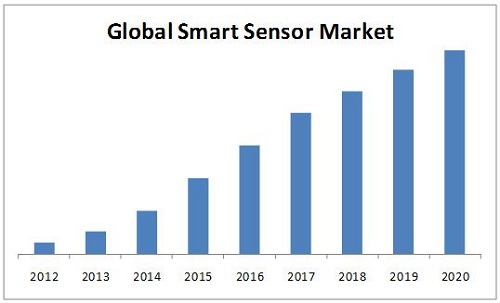The smart sensor has the ability to take decisions and integrate electronics and sensors. It consists of signal conditioning electronics, transduction element, and controller. Technologically advanced sensors enable the sensors with individual processing power for larger data acquisition systems. Increasing demand and advancing technology are driving the global smart sensor market. Despite the growing challenges, businesses in the industry are thriving across the globe. Major benefits and applications across economically viable fields are estimated to be great drivers for the market for the next few years to come. Business expansions and increasing interests from new players have also proved to be vital for the overall conditions of the smart sensors market.
Drivers and Trends
The smart sensors have many benefits, which include minimal cost, high reliability, scalability, and high performance. These devices provide decision-making ability, two way communication, logic functioning and such other advantages. As a result, the global smart sensor market is making waves across different parts of the world. Increasing applications of these products across various industrial verticals is also a strong reason for the growing market. Industries like aviation, automotive, consumer electronics, and biomedical, etc. fields are creating buzz. As a result, the market is expected to witness exponential growth in terms of demand, applications, technological breakthroughs and revenue channels.
Segments
The smart sensor market is segmented on the basis of the types of technologies, applications, demand from different industrial verticals, and geographic regions. Smart sensor technologies are categorized into optical spectroscopy, complementary metal-oxide-semiconductor (CMOS) and microelectromechanical systems (MEMS). The types of sensors are segmented into turbidity, flow, oxidation reduction potential, touch, and pH and temperature sensors. Application segment, which includes leading industries with applications of smart sensors, include aerospace and defense, automotive, biochemical, consumer electronics, industrial and building automation, and others. Geographic regions include North America, Asia Pacific, Europe and RoW.
Forecasts
According to the latest market research reports, the global smart sensor market is expected to grow at a CAGR of over 36% and reach $10.46 billion by the end of the year 2020. Experts have considered various market components including segments, current trends, demand patterns, competition, adoption rate, technological advancements, performance of leading market players, and global presence of the overall industry. Analysis of all these factors helps drawing conclusive analysis about the current as well as projected growth of the industry. Pressure, temperature, flow and touch sensors are expected to dominate the types segment. North America and Europe are dominating regions, while Asia Pacific is expected to become the fastest growing geographic regions during the forecasting period.

